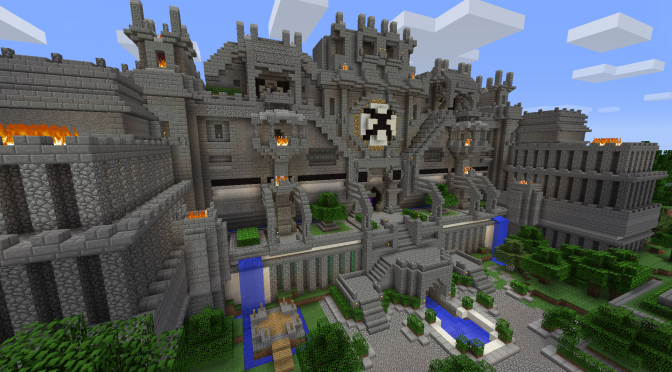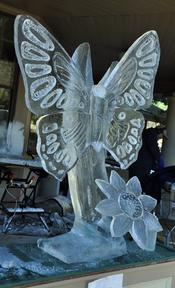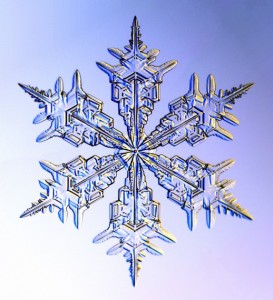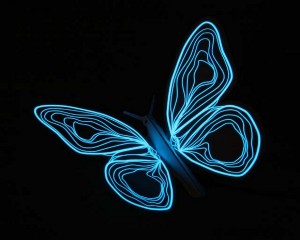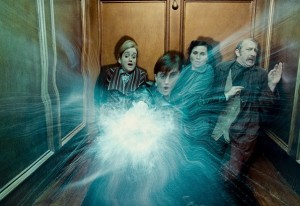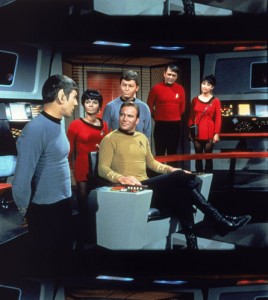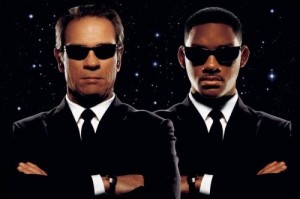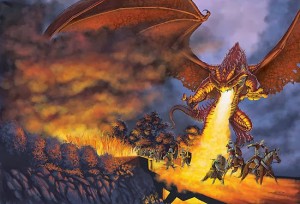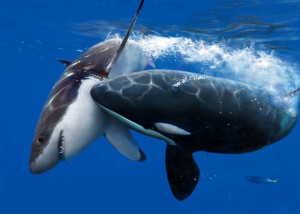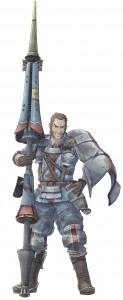Writing an original work can be hard, especially in genres that present not just original characters and themes but entire worlds. Speculative fiction genres like fantasy, scifi, and even urban fantasy to a lesser extent, feature a great deal of legwork to make something feel believable. I recently wrote about how you would write the future in a realistic fashion, and about how you could introduce dragons into a non-magical world, but both of these are just fragments of a much larger concept that could use some attention.
There are many tutorials out there about how to write good characters and how to make situations feel more plausible, but very rarely do we go to the grand scale of building the entire world these characters would live in. This, in part, is because world building isn’t something you have to do in most genres – the world was already built for you. You don’t have to go to great lengths to build the world around a period piece taking place in the Victorian era. Instead, for those genres, you just have the one piece of advice: “research”.
But for us in the more fantastic genres, there’s a lot of work that we have to go through to make things really flow for our audience. Often we are using old tropes presented by our predecessors to try to assemble them like lego blocks to fill in that world. Sometimes, we may even go out of our way to create an alternative to the tropes we’ve already seen, but inevitably we will still fall into a well worn groove despite our efforts. After all, if you’re using parts of a world created before you and then writing a story that fits the human perspective, you’re going to have a high chance of hitting something that someone else has already done. This is a great deal of why so many fantasy and sci-fi stories read the same.
So how do you create something that feels “fresh” without having to completely reinvent the wheel? Solid world building.
Snowflakes, Butterflies, and Dragons
To start, don’t worry about being 100% original, that’s not the purpose of this. Even if you use a lot of the same parts as another story you can make your story feel fresh and worthwhile through your details. There are several ways to go about this, but no matter what you do you’re going to run into similar themes because that’s just part of being human. The more you change of your details, the more your world will feel fresh to the audience regardless of the similarities. So a unique world doesn’t require starting completely from scratch, but it does require you be mindful of what you’re putting together.
One of the suggestions I’ve given a lot of has been to use Alternative Mythologies and go off the beaten path. In theory, even using the old tropes, the new lego blocks those mythologies present can give you some mileage. But even in that case you often have to worry about just how your world is going to function around these. So, regardless of whether you’re striking it off on your own path or you’re hoping to make a unique story with the old parts, a good sense of world building can go a long way.
Through my talks with other writers, I find that a great deal of struggles with world building happens from not knowing where to start. After all, it’s not like the world we’re used to has a really solid “starting point”, and that’s really the only example we have to work from most of the time. But, luckily, some of those tutorials about character development present us a worthwhile option.
“The Snowflake”
One of the oldest observations made was that every person is like a snowflake, unique but still similar enough to blend together from a distance. Every snowflake is made of water and the crystals form from the same fundamental laws, but each one is a unique shape that doesn’t match any of the ones around it. Is it possible that two snowflakes may be identical? Sure, but it’s highly improbable, just like with people.
So, realizing this, and seeing the shape of snowflakes themselves, it became a pretty good analogy for character creation. The “snowflake” method is character creation through constant creation of detail. At the core you start with a defining trait of the character, something that makes them different from everyone else. From that core, you then add on extra details to who they are and continue to construct outwards from there. Maybe they’re deeply religious, so then you could build on top of that to say they could be conservative in the way they dress or maybe they work with a charity group. Each detail you add to the snowflake creates a whole new branch of possibilities and opens up new details that could be added on top.
However, this also works well for the idea of building worlds. Though we rarely think of it outside of slightly pretentious quotes, the setting of your story really is a character unto itself. Though it doesn’t get dialogue (usually), the world your characters live in is just as much a part of the story as any protagonist. In fact, one could easily argue that the world itself is usually more influential than your characters, regardless of standing. It may be that a king rules a kingdom, but a natural disaster can render his holdings to rubble in an instant.
So treating the world like a character is a good way to start, because it really does have a personality of its own even if it doesn’t express that personality the way a human character would. Start with the thing that makes that world particularly unique, like having magic, and then work out from there with the addition of greater and greater detail. What kind of magic is it? Can everyone use it? How do those in leadership respond to this magic? Each of these questions leads to a new answer which leads to greater and great complexity within your snowflake.
The important difference between building a character in this way and building a world in this way is knowing which questions to ask. For a character, every detail, no matter how far back or how trivial, is going to be something that can be used in some way to determine their actions and their personality. If they had a frightening encounter 20 years ago with an animal, they may be more cautious in certain environments even if you never mention that particular animal in the story. Most of the characters from the Jurassic Park franchise are never going to be comfortable in a tropical setting ever again whether or not they run into another T-Rex.

But the world has no real sense of memory, at least not one that would impact the present day much without human interaction. If an earthquake were to have happened right where you were standing 50 years ago, you may not recognize that it ever occurred at all. Perhaps the people who lived in that place at the time would still be around to tell you about it, but the world itself isn’t going to go out of its way to remind you beyond some ruined buildings and maybe a large fault-line. In this way, while the snowflake is a good starting point, we need to further evolve the concept to include the world’s version of “memory”.
“The Butterfly”
One of the forces that controls the real world and easily applies to creating your fictional world is the idea of “cause and effect”. Anyone who’s familiar with the “butterfly effect” is at least partially familiar with the idea and understands it to a point. When something happens there’s always going to be some sort of response. This is how you come about to asking the right questions when building your world. For every action there will be a reaction and those reactions will have their own reactions. For instance:
Cause: We have perfected work robots.
Effect: Robots take over all of the work humans can’t or won’t do themselves
Cause: Magic exists and can be accessed by children
Effect: Magical schools exist to teach these children to control their powers
Cause: We’ve invented FTL travel.
Effect: We explore the stars and expand through the galaxy
Cause: Inhuman creatures have assimilated into society.
Effect: We need police who are capable of policing these creatures safely.
Cause: you like the sound of that and want to see it with mythological creatures.
Effect: You buy my books.
For each detail added to your world, there will be effects that ripple out from those details. This rippling will cause you to reach points where things become more fleshed out than even you thought possible because one question will effortlessly lead to the next after some practice. You’ll soon find that not only do you start to create that snowflake from before but that it won’t be dependent on the personality or memory of any specific character but rather dependent on what long lasting effects will be present.
For instance, while those characters from Jurassic Park will be forever traumatized by what happened all those years ago, it is inevitable that people who haven’t been traumatized will be curious to the things that remain on that island. Given time and appropriate interest, a park or research facility of some fashion would be built on the site regardless of what happened there. In essence, while isolated characters will forever respond to what happened to them personally, the world tends to forget things that happened on the personal level – no matter how intense those things may have been. The only time your world will really remember something that happened in the past is when that event was so massive that a great deal of characters share that sentiment.
So for world creation, if a detail isn’t current, go big or go home. And after your detail is big enough, work out from there with what reactions would arise from it.
“The Dragon”
So, to bring it together, let’s go ahead and make an example by taking a look back at the “realistic dragon” from a few entries ago. Mind you, this isn’t the only sort of world that could arise from the existence of such creatures, but it’ll go to show part of how this chain of cause and effect could work.
So let’s assume that the realistic dragons fell on the non-intelligent side of the scale for the sake of brevity and that they were simply an apex predator in the world that happened to dominate all other animals in their environment. So, first of all, the dragons would impact all of the ecosystems they take part in. Any environment that had the dragon would see the apex predator of that environment displaced or adapted as they wouldn’t be able to compete with these unnatural creatures as is. As an example, an aquatic dragon would likely overtake sharks in most environments unless those sharks similarly adapted to meet the challenge. In the real world we see this when orcas encounter sharks…and the orcas eat the sharks.
Similarly, humans are an apex predator due to being the smart monkeys we are. Because of this, we would have to assume that the presence of something that could fly and breathe fire would impact how we utilize that intelligence. Technology that would become useful in dragon response would become important such as fireproofing, anti-air weapons, dragon detection systems. In WW2 there were air raid sirens which would sound off as planes approached for bombing runs, in the world of dragons we would similarly have a means of warning people of oncoming dragons. There would be some means of getting civilians to places where the dragons would have difficulty reaching, and what soldiers remained would have equipment designed specifically for dealing with the threat.
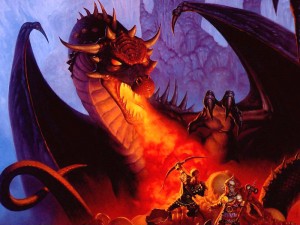
That last part is often overlooked, as any time you see dragons in a story there’s a good chance that it’ll happen in the time of sword and sorcery. But if we’re to assume that humans are still as intelligent as we are today, it goes to say that we wouldn’t be using swords against a creature that could spit a fireball at us. Instead, we’d be much more likely to build new projectile weapons meant to inflict as much injury to these creatures as possible in short order. To put it another way, we would likely develop a weapon which could travel a long distance, pierce its hide, and then detonate. Anyone who has played Valkyria Chronicles would be familiar with such a weapon.
Faced with a creature like a dragon, we’d probably build something similar just because of the challenges they present. It wouldn’t make much sense for us to continue using swords because swords would be a short range weapon only capable of doing only as much damage as only one of their claws. Similarly, this would likely mean we’d make sure any vehicle we used could avoid being destroyed by dragons, meaning we’d be much more reliant on heavier metal vehicles like trains. And, for that matter, knights likely wouldn’t have gone out of style as they would still be wearing the appropriate protective equipment while carrying their rocket lances.
In essence, while we may be attached to the old concept of fighting a dragon with a sword and a shield…
There’s a reason why Bowen had to cut a deal. (Sorry for the quality, Dragonheart scenes are nearly impossible to find)
(I write novels. They feature creatures of legend being incorporated into the modern world. I also write tweets, they feature me trying to be noticed by the modern world. Both are worth a read.)


